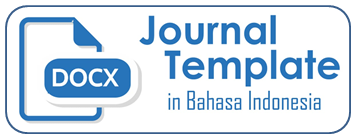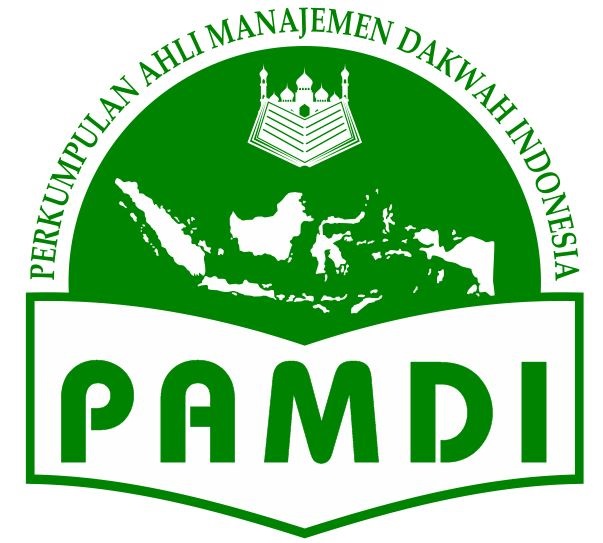Analisis Program Dakwah Islam Itu Indah di Trans Tv Perspektif Audience and Users
DOI:
https://doi.org/10.56874/almanaj.v2i02.1035Keywords:
Islam itu indah, pesan dakwah, audience, uses & gratificationAbstract
Program dakwah “Islam Itu Indah” di Trans Tv dalam perspektif audience dan users? Peneliti memilih program islam itu indah, salah satu program religi yang ratingnya cukup tinggi sekitar 22. Selain memiliki rating yang tinggi, “Islam Itu Indah” juga menjadi salah satu acara terpopuler di tahun 2011 versi Tabloid Bintang. Sejak pertengahan November 2011, Tabloid Bintang mengundang masyarakat luas untuk mengisi polling “25 Acara TV Paling Popular” menurut pemirsa. Dalam hasil polling tersebut, hanya muncul dua sajian acara dakwah berupa ceramah yaitu “Islam Itu Indah” (posisi ke 20). Teori yang digunakan dalam kajian ini adalah from audience to users yang dikemukakan oleh Gill Branston dan Roy Stafford. Dalam penelitian ini menganalisis program dakwah sekaligus audience sebagai penonoton dalam acara tersebut. untuk semua kalangan yang ingin menyaksikan tayangan dakwah. Untuk menyampaikan pesan-pesan dakwah, diperlukan media yang efektif. Televisi merupakan media massa yang strategis sebagai sarana dakwah. Media ini sangat populer di tengah masyarakat yang dapat menjangkau audiens dan pengguna hingga ke pelosok. Penyajian materi-materi dakwah di televisi yang berbobot dan menarik menjadi bagian penting, sehingga diminati pemirsa sebagai objek dakwah (mad’u).
References
Bakti, Andi Faisal. (2003). Communication and DAKWAH: Religious Learning Groups and
Their Role in the Protection of Islamic Human Security and Rights for Indonesian Civil Society W. Nelles (ed.), Comparative Education, Terrorism and Human Security.
Bakti, Andi Faisal .(2015). The Integration of Dakwah in Journalism. Komunikasi dan Penyiaran Islam, Fakultas Dakwah dan Komunikasi Universitas Islam Negeri | ISBN 2088-6314. h, 195.
Bakti, Andi Faisal. (2010). “The Contribution of Dakwah to Communication Studies: Risale-i Nur Collection Perspective,” diakses melalui http://www.risaleinur.com/studies/139- conferences/2010/4127-the-contribution-of-dakwah-to-communication-studies.html,02 Desember 2021
Gill Branston, Roy Stafford, The Media Students’s Book, (London and New York: Routledge, 2010), h. 379-402.
Hamidi, Metode Penelitian Kualitatif Pendekatan Praktis, Penulisan Proposal dan Laporan Penelitian, (Malang: Ummpress, 2010), h. 55.
Muis, Komunikasi Islami, (Bandung: PT Remaja Rosdakarya, 2001), Cet. ke-1, h. 36.
Nana Sudjana & Ibrahim, Penelitian Kualitatif dan Kuantitatif, (Bandung: Sinar Baru, 1989), h. 64.
Zamris Habibi & Hardjito (2017). Analisis Isi Program Islam Itu Indah Di Stasiun Trans TV, Jurnal Miskat Al Anwar, h. 5.
TransTV.co.id, Profile (2022). Tersedia dari: https://www.transtv.co.id/corporate/profile/
Tabloid (2022) Tersedia dari: https://archive.tabloidbintang.com/extra/top-list/19272-ini-peringkat-25-acara-populer-2011-pilihan-anda-17-25.html
Downloads
Published
Issue
Section
License
- All articles published in Al Manaj: Jurnal Manajemen Dakwah are licensed under a Creative Commons Attribution-ShareAlike 4.0 International (CC BY-SA) license. This means anyone is free to copy, transform, or redistribute articles for any lawful purpose in any medium, provided they give appropriate attribution to the original author(s) and Al Manaj: Jurnal Manajemen Dakwah, link to the license, indicate if changes were made, and redistribute any derivative work under the same license.
- Copyright on articles is retained by the respective author(s), without restrictions. A non-exclusive license is granted to Al Manaj: Jurnal Manajemen Dakwah to publish the article and identify itself as its original publisher, along with the commercial right to include the article in a hardcopy issue for sale to libraries and individuals.
- Although the conditions of the Creative Commons Attribution-ShareAlike 4.0 International (CC BY-SA) license do not apply to authors (as the copyright holder of your article, you have no restrictions on your rights), by submitting to Al Manaj: Jurnal Manajemen Dakwah, authors recognize the rights of readers and must grant any third party the right to use their articles to the extent provided by the license.

This work is licensed under a Creative Commons Attribution-ShareAlike 4.0 International License.


.jpg)










